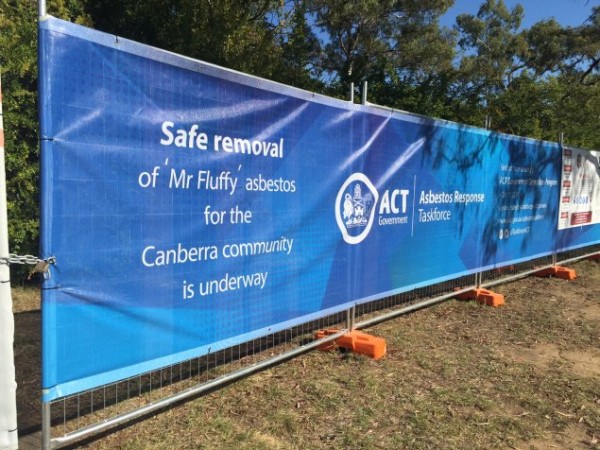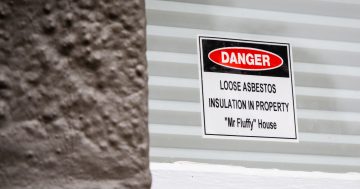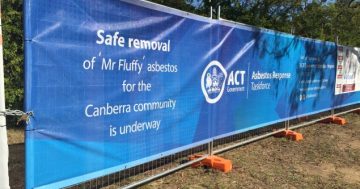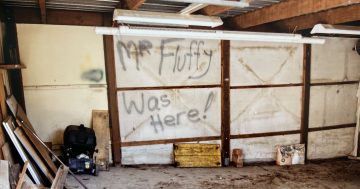
A Mr Fluffy site. Loose-fill asbestos was installed into the roof spaces of more than 1000 homes in the ACT. Photo: ACT Government.
Living in a Mr Fluffy house for a period of time can increase the cancer risk for the occupants, particularly for men, a new study from the Australian National University shows.
The study found men who had lived in a home containing loose-fill asbestos insulation had a higher risk of developing mesothelioma.
Principal Investigator Professor Rosemary Korda said men who had lived in an asbestos-affected home at some point since 1984 were 2.7 times more likely to develop mesothelioma compared to the rest of the ACT male population.
“In absolute terms, there were seven to eight more mesothelioma cases among men who had lived in a Mr Fluffy home, compared with those who hadn’t, in the 35-year period between 1984 and 2019,” she said.
The study could not say if the risk for women was similarly higher as there were too few mesothelioma cases among women in the ACT who had ever lived in a Mr Fluffy house to estimate with any certainty.
But both men and women had a higher risk of developing bowel cancer, and for women there was also a greater risk of developing lung cancer.
Men and women in the ACT who had lived in a Mr Fluffy home had a 24 to 46 per cent greater risk of developing bowel cancer, while women in the ACT who had lived in a Mr Fluffy home had a 39 per cent greater risk of lung cancer compared to the rest of the ACT female population.
Study co-author and Research Fellow Hsei Di (Sadie) Law said the evidence for links to these other cancers was not as strong.
“The evidence for these cancers being linked to living in a Mr Fluffy home was less strong after taking into account certain limitations of the study and drawing on knowledge from existing research,” Ms Law said.
Professor Martyn Kirk from the National Centre for Epidemiology and Population Health said while there was a higher risk, mesothelioma was extremely rare and only a small proportion of people would ever develop it or other cancers.
Professor Kirk said the higher risk for men was due to them being more likely to be the ones climbing into roof spaces or doing home renovating.
He said it was not really surprising for bowel cancer to be a risk given fibres could be ingested.
“There was really no cause for concern but people should see their GP if symptoms occur,” he said.
Ms Law said that mesothelioma was challenging to study because it was a rare cancer and required following large cohorts over long periods.
It can take between 20 and 40 years, or longer, for mesothelioma to develop after exposure to asbestos.
Between 1968 and 1979, the company commonly referred to as ‘Mr Fluffy’ installed loose-fill asbestos into the roof spaces of more than 1000 homes in the ACT.
The study drew on 35 years of data collected from residential address records, death records and the Australian Cancer Database and followed almost 17,000 people who had lived in a Mr Fluffy home between 1984 and 2019.
However, it did not account for other lifestyle factors such as diet, smoking and alcohol consumption.
It examined the rates of mesothelioma, a rare form of cancer that has been linked to asbestos exposure, among people who had lived in these homes and compared them to the rest of the ACT population.
Asbestos was banned in Australia in 2003.
The new data was published in the latest edition of the ACT Asbestos Health Study, which is funded by the ACT Government and has been running since 2015.



















